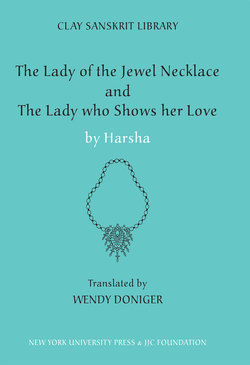Читать книгу The Lady of the Jewel Necklace & The Lady who Shows her Love - Harsha - Страница 41
На сайте Литреса книга снята с продажи.
Оглавлениеing themselves. This is what happens, in different ways and in different texts, to both Udayana and Vasava·datta.
What is the relationship between the various forms of mental transformation used in all of these retellings of the tale of Udayana and Vasava·datta, both Harsha’s and those of his sources? We have magical illusion (used by Kalinga· sena’s magician in the ‘Ocean of the Rivers of Story’ and Va- sava·datta’s in ‘The Lady of the Jewel Necklace,’ and by the king himself in both plays—a magic plant fertilizer in ‘The Lady of the Jewel Necklace’ and a magic snake-venom cure in ‘The Lady who Shows her Love’), art (the trick of garland-making and the portrait made by Sagarika), the slip of the tongue (which happens twice), dreaming (experienced by king Udayana in the play by Bhasa and by the jester in ‘The Lady who Shows her Love’), masquerading (by the women in ‘The Lady of the Jewel Necklace’), and play-acting (by the king in ‘The Lady who Shows her Love’). How do these various forms of illusion—magic impersonation, magic disguise and art, portrait, play, slip of the tongue, and dream—work, each in its own way, as roads to the recognition of the true self and the true beloved? What do they tell us about the relationship between dreams, theatre, and personal masquerade? The jester’s sleep, in ‘The Lady who Shows her Love,’ which lets him unconsciously reveal the truth to the queen, a key moment in the plot, is a transformation of the king’s dream in ‘Vasava·datta in a Dream’ (itself a transformation of the revealing sleep in the ‘Ocean of Rivers of Story’). The mynah bird in ‘The Lady of the Jewel Necklace’ (whom the jester mistakes for a ghost, at first) is similarly unconscious of what she says, ________
